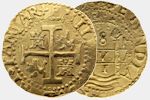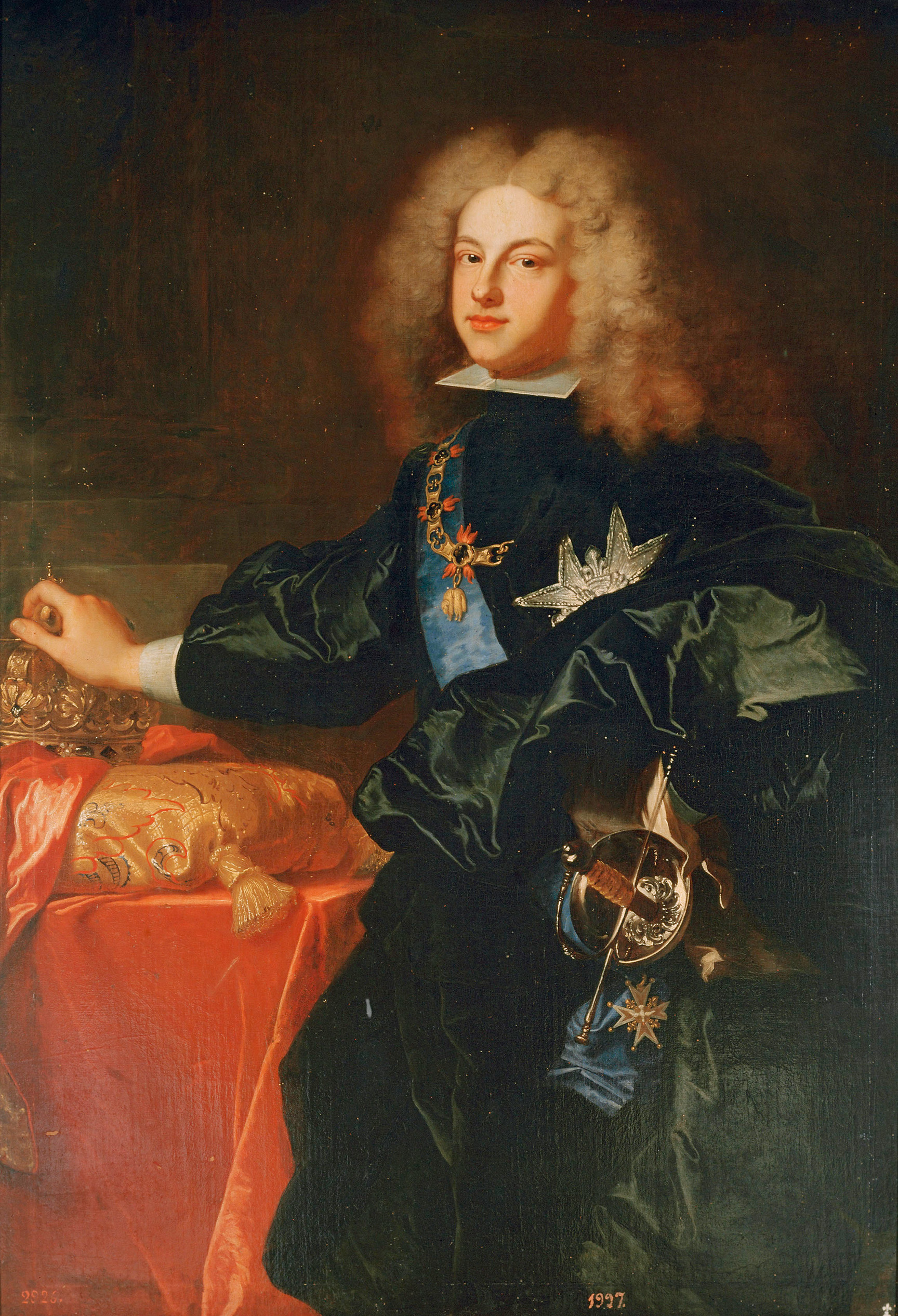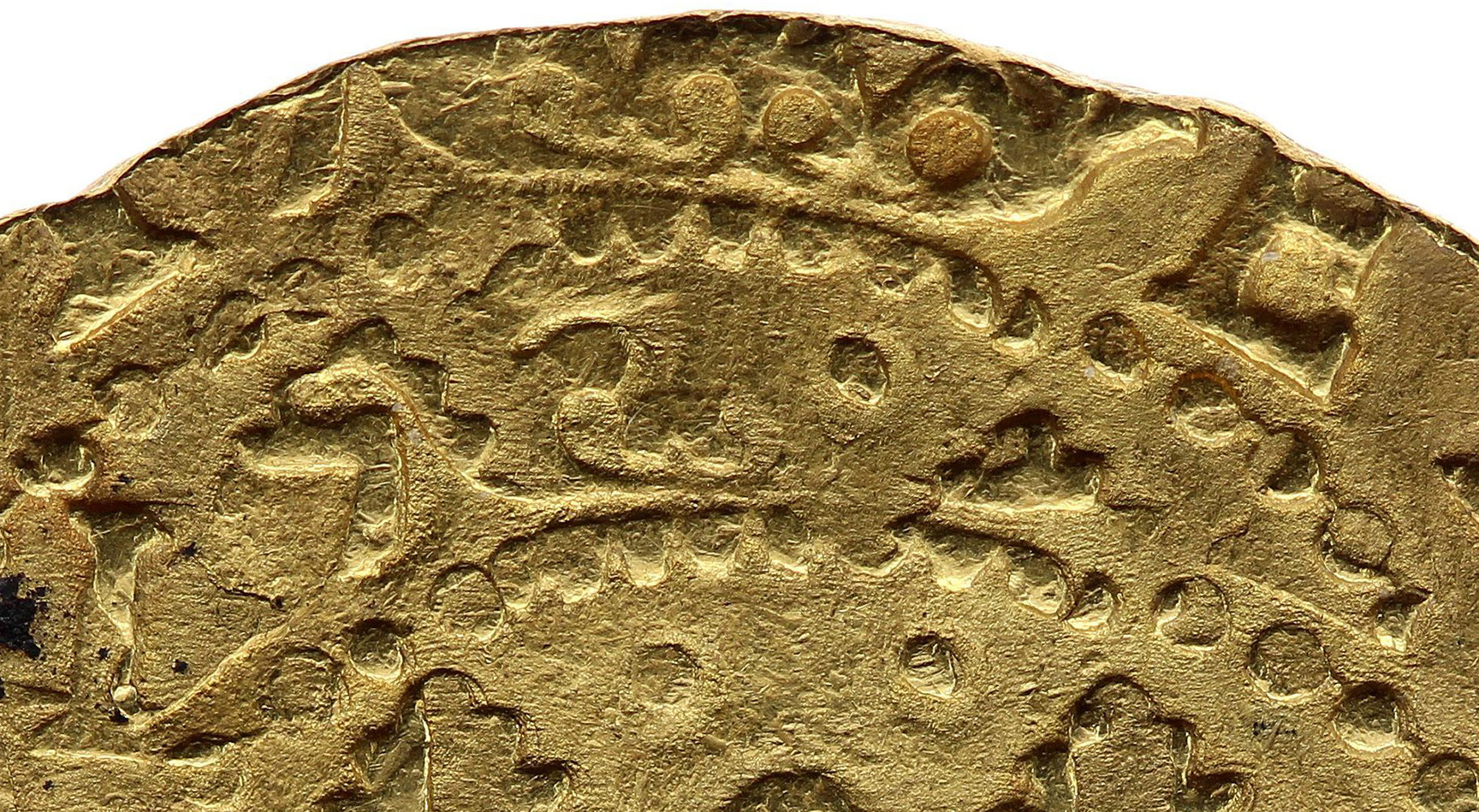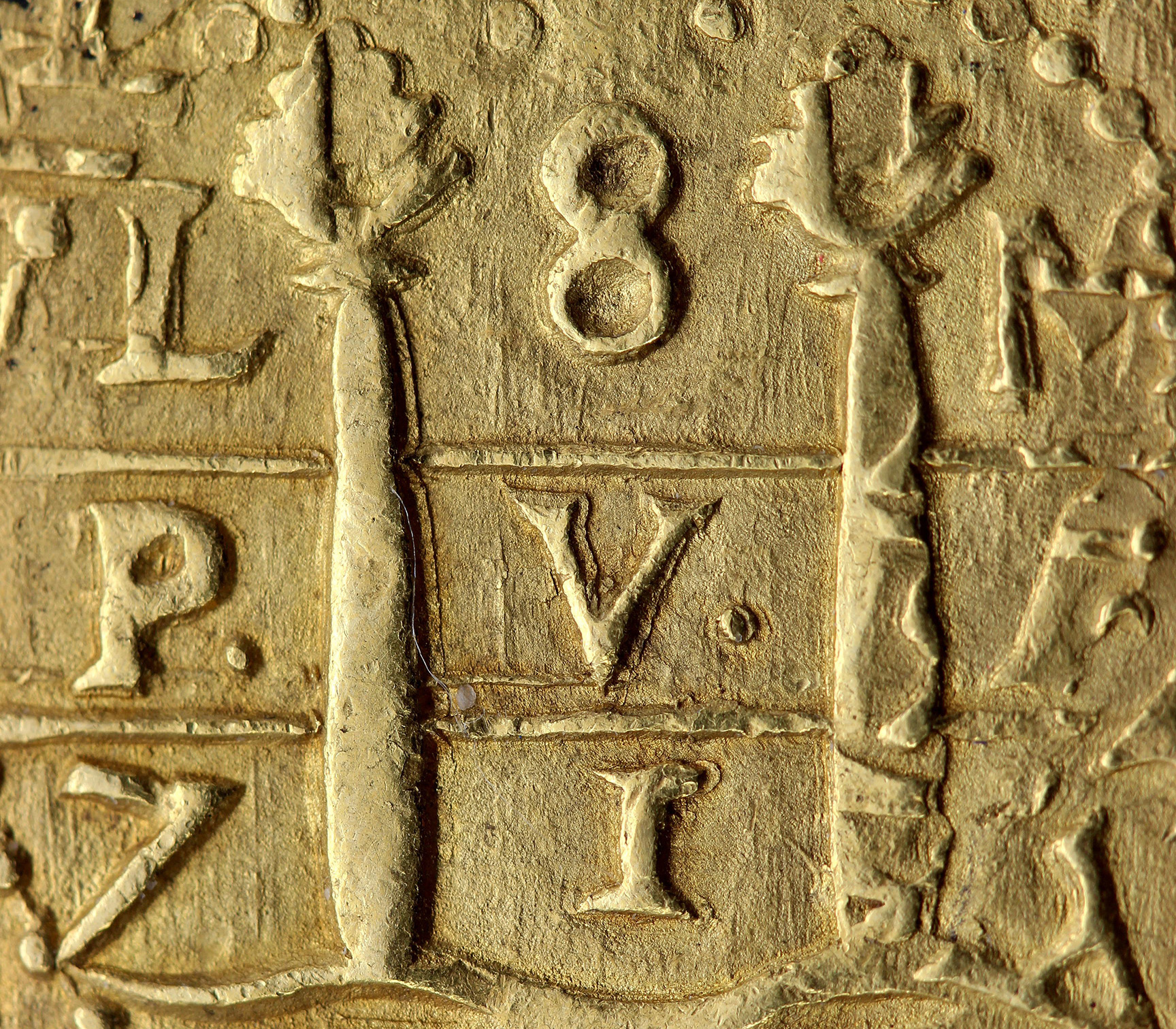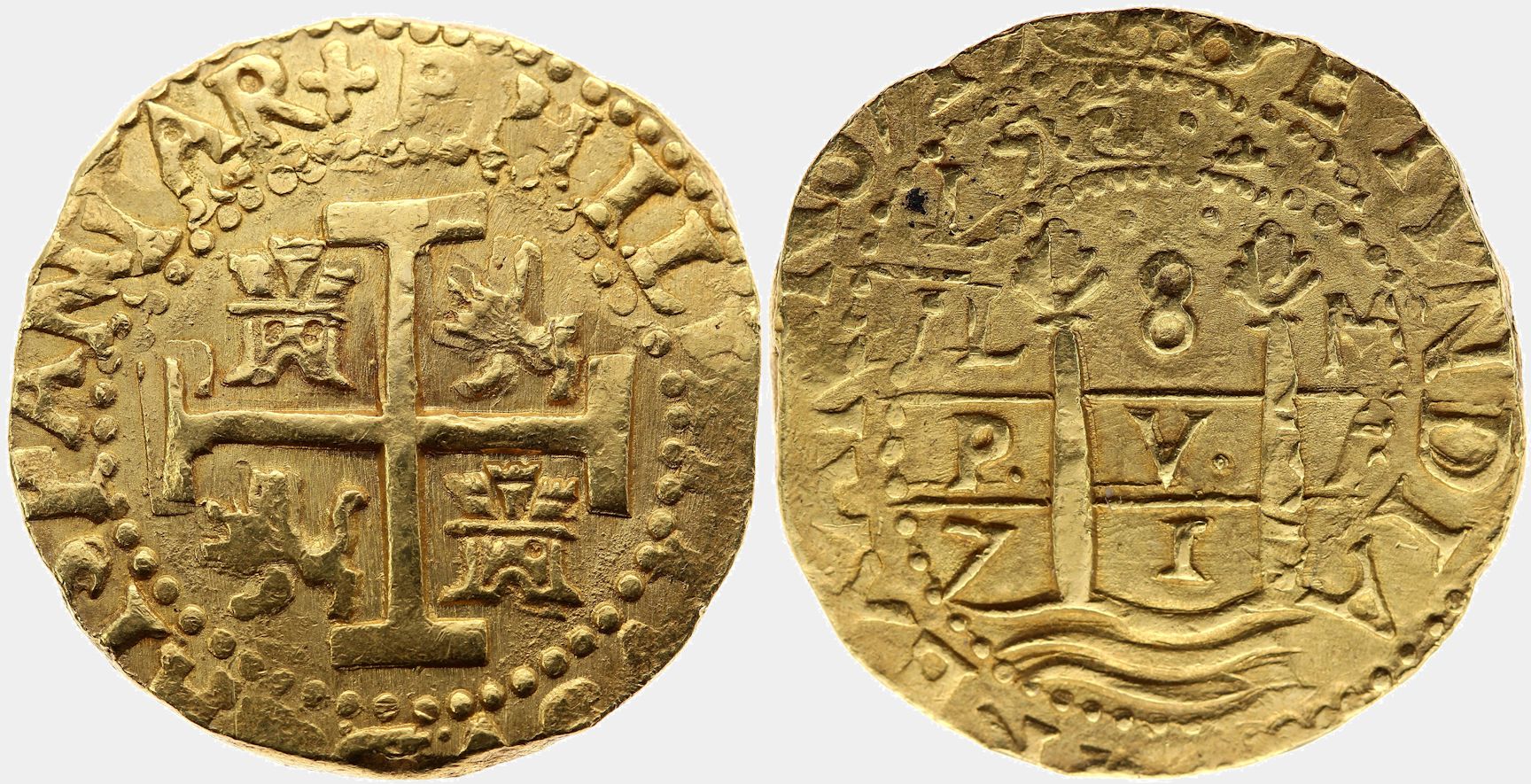
Money for the Old World from the New World Eight escudo piece, Philip V
Spanish Colonial Empire / Viceroyalty of Peru
King Philip V (1701-1746)
8 Escudos de oro, 1717
Mint: Lima
Material: Gold
Weight: 26.95 g
Diameter: 33,5 mm
Spain's colonial empire spanned vast parts of Central and South America. These lands, rich in gold and silver, were an important resource for the kings of Spain. The Spanish established mints in their American colonies to produce coins from the precious metals extracted in the New World. The oldest mint on the American continent is the Mexican Mint, which was set up in 1535. Twice a year, the famous silver fleet sailed from the New World back to Spain fully laden with treasures.
Our special piece comes from the Viceroyalty of Peru, which at the time covered large swathes of South America. The obverse side depicts the cross of the Order of Knights Hospitaller, with the emblems of Castile (castle) and León (lion) in the corners. The Latin circumscription PHILIPPVS V D(ei) G(ratia) HISPANIAR(um) ET YNDIA(rum) REX AN(n)O (1)717 begins on the obverse side and continues on the reverse. The inscription names Philip V as the coin issuer, who designates himself the King of Spain and the Indies by the grace of God, and the year it was minted, 1717. The reference to "the Indies" reflects Philip's claim of sovereignty over American territories colonised by Spain.
The Spanish King Charles II, who remained childless, named Philip V, Duke of Anjou and the grandson of Louis XIV, as his successor. After the death of Charles II in 1700, this decision triggered the War of the Spanish Succession because Archduke Charles of Austria, the son of Emperor Leopold I, also asserted his claim to the Spanish throne. It was only after the Treaty of Utrecht was signed in 1713 that Philip V was confirmed as the King of Spain.
The main motif on the reverse side are the two Pillars of Hercules standing in the sea. In ancient times, the Pillars of Hercules symbolised the Strait of Gibraltar and the passage from the Mediterranean Sea to the Atlantic Ocean. It was considered the end of the world at the time. The Spanish crown sits atop both pillars.
Both pillars and two horizontal lines divide the design on the reverse side. The top line gives us the mint, the face value and the wardein, the mint warden:
The letter “L” stands for the Lima mint. The mint in Lima had already been established in 1565 but had not been in continuous operation. The Spanish produced gold coins like this one at this mint between 1696 to 1750.
The number 8 is the face value and designates the coin as an 8 escudo de oro. These coins were also called onza or quadruple. The minting requirements for 8 escudos were to produce 8½ pieces per Castilian mark with a target weight of 27.06g each; their purity was 22 carat (=916.6/1000). The name escudo de oro (golden shield) comes from the Spanish coat of arms that was originally on the obverse side of this type of coin.
The letter “M” on the far right is the initial of the wardein, an important minting official, Cristóbal Melgarejo.
The second row bears a three-letter abbreviation (“P-V-A”) of the motto PLUS VLTRA (further beyond). The numbers “717” in the bottom section indicate the year of minting, 1717.
Coins from the Spanish colonies in America are of exceptionally poor production quality. They frequently have irregular shapes and bear unclear and incomplete mint designs. In our 8 escudo piece, the flan (blank coin) was too small for the stamp, the minted image is not fully visible, and the minting indicates a minting error called a "double strike". A double strike occurs when a coin is minted with not just one strike but with two or more strikes. When this happens, the flan may sometimes slide out of place between the stamping dies and a second, off-centre mint design partially overlaps the first. This is especially noticeable on the reverse side, in the area above the two pillars.
These coins, which were minted in huge quantities from irregular flans using poorly cut stamping dies, are called macuquinas. The Spanish only ceased minting macuquinas in the mid-18th century. This was an important step, as the value of gold and silver coins highly depended on their metal value. It was easy for fraudsters to file off or cut off small portions of the precious metal from the edges of irregularly shaped coins without this being noticed. Only round, technically well struck coins with an edge design in the form of a pattern or an edge inscription were well protected from this type of coin forgery.
